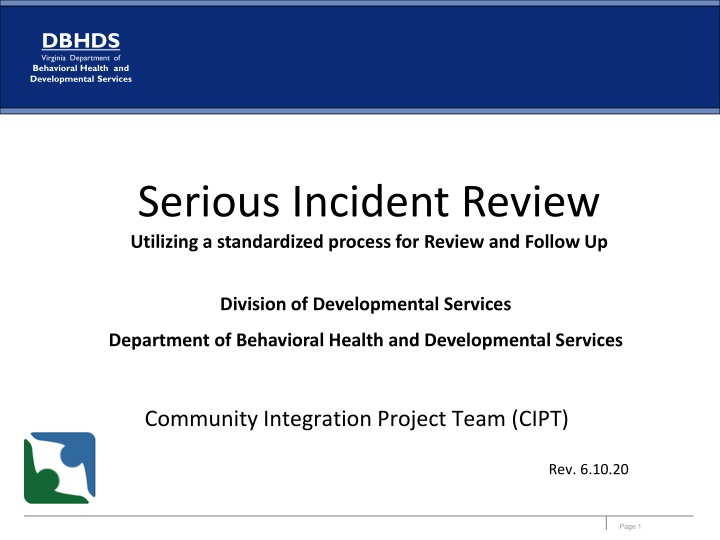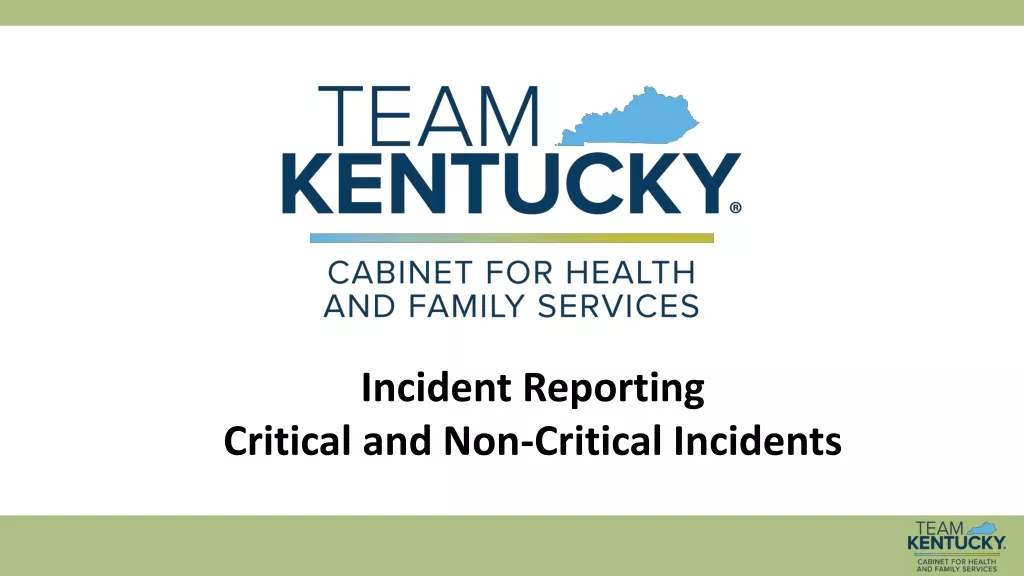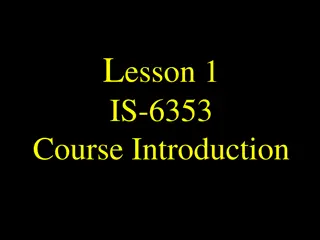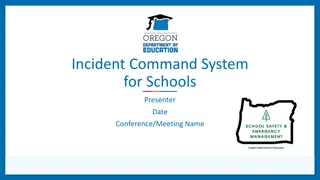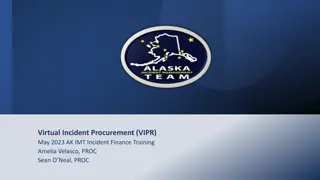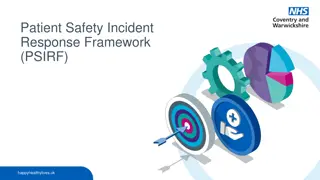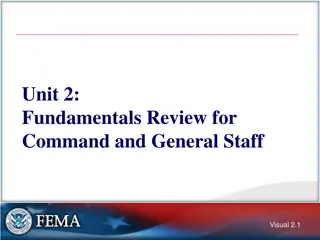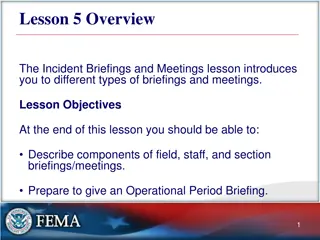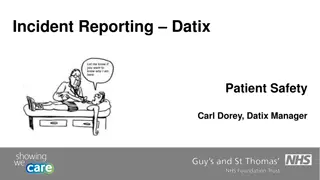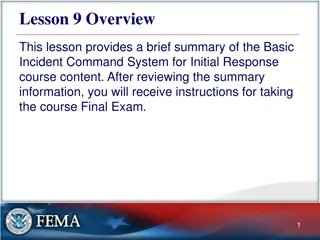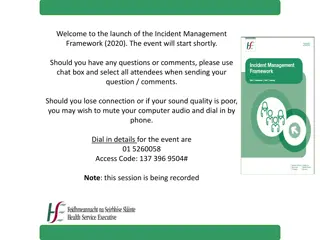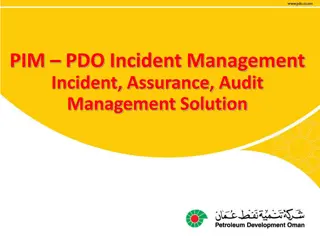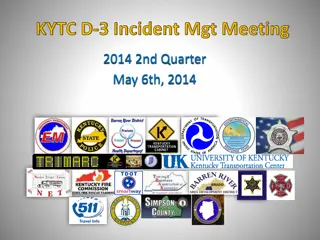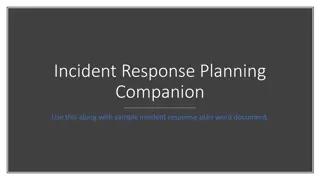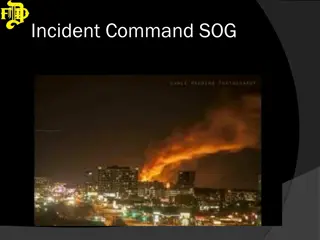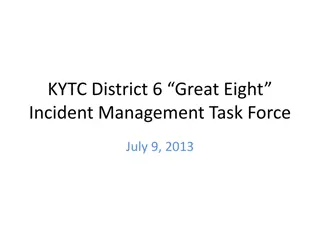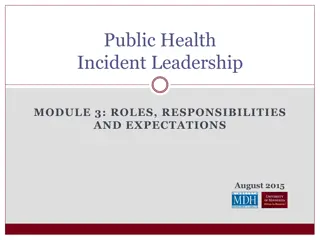Serious Incident Review
"Discover the current officers of SDASA, including Xiaoyun Li as Interim President, Sandahl Nelson as Secretary, and Kristen Hansen as Treasurer. Learn about upcoming officer positions and volunteer opportunities. Explore past activities and member reports of SDASA. Get involved and stay informed in the statistical community of San Diego."
Download Presentation

Please find below an Image/Link to download the presentation.
The content on the website is provided AS IS for your information and personal use only. It may not be sold, licensed, or shared on other websites without obtaining consent from the author.If you encounter any issues during the download, it is possible that the publisher has removed the file from their server.
You are allowed to download the files provided on this website for personal or commercial use, subject to the condition that they are used lawfully. All files are the property of their respective owners.
The content on the website is provided AS IS for your information and personal use only. It may not be sold, licensed, or shared on other websites without obtaining consent from the author.
E N D
Presentation Transcript
DBHDS Virginia Department of Behavioral Health and Developmental Services Serious Incident Review Utilizing a standardized process for Review and Follow Up Division of Developmental Services Department of Behavioral Health and Developmental Services Community Integration Project Team (CIPT) Rev. 6.10.20 Page 1
DBHDS Virginia Department of Behavioral Health and Developmental Services To implement a systematic and comprehensive process that identifies risk factors leading to incidents such as: Injury or Illness requiring medical attention Loss of community placement Readmission to a Virginia Training Center Hospitalizations (either medical or psychiatric) Death To analyze findings and collaborate amongst support partners to identify the services needed to prevent the disruption of the current placement; or develop strategies to ensure successful planning for a transition to the most integrated setting appropriate to meet the needs of the individual. Page 2
DBHDS Virginia Department of Behavioral Health and Developmental Services Incident Review Process A designated member of the CIPT checks the DBHDS Data Warehouse each business day to identify and notify team members of incidents related to individuals discharged from Training Centers Notification may also come directly from the community provider or Community Services Board Support Coordinator Page 3
DBHDS Virginia Department of Behavioral Health and Developmental Services What is an Incident? An incident may include but is not limited to: a) Illness b) Injury c) Behavioral crisis d) Death e) Loss of placement f) Readmission to a Training Center Page 4
DBHDS Virginia Department of Behavioral Health and Developmental Services Focus is on Supporting Providers The purpose of incident follow up is not only to gather information regarding the current status of the individual, but to offer additional support to help ensure the individual s ongoing health, safety and wellbeing. The CIPT staff should never request a corrective action plan. The process involves contact with the provider and should include a discussion regarding their continued ability to support the individual as well as suggestions for how to resolve concerns. The purpose of this process is to prevent additional incidents, such as hospitalizations, nursing facility admissions, or death. Page 5
(804) 371-5384 (804) 371-5384 Step 1 DBHDS Virginia Department of Behavioral Health and Developmental Services Contact and Confirm Contact community residential provider by phone: Request current status of the individual Is the placement at risk? What supports are needed to continue serving the individual? Confirm current status of skin integrity Were there any new decubitus ulcers acquired during hospitalization? If currently in the hospital, is the provider sending staff and during what hours? Has the CSB Support Coordinator been contacted and made aware of the incident? (not applicable for ICF providers) Contact CSB Support Coordinator by phone and/or email to exchange information Page 6
DBHDS Virginia Department of Behavioral Health and Developmental Services Contact and Confirm (cont d) Ensure that needed health and safety protocols related to the incident are in place and are effectively and consistently implemented. Determine if the individual needs to follow up with a PCP or Specialist (i.e. after an ER visit); and if so, by when? If injury or illness is suspected to be related to abuse, neglect or exploitation, was the incident reported to APS? Page 7
DBHDS Virginia Department of Behavioral Health and Developmental Services Behavioral Incidents If the incident was related to or caused by problematic behavior: Was the Behavioral Support Specialist contacted? Was REACH notified and did they provide support? Does the individual need a psychiatry appointment? Is it scheduled? Have there been any recent medication changes? For recent psychotropic medication changes, was the informed consent updated and signed by the AR/LG? Page 8
Requesting Supporting Documents DBHDS Virginia Department of Behavioral Health and Developmental Services When contacting the Provider due to an incident involving hospitalization, request the following supporting documents: Hospital discharge paperwork New or updated protocols related to the Incident Other documentation regarding support provided in the home related to the incident, i.e., Bowel Tracking Logs and protocols, Fluid Intake Tracking logs and prevention of dehydration protocol, etc. All conversations and correspondence with the provider regarding the incident should be documented in the Incident/Readmission/Occurrence Report Follow Up and Updates form. Page 9
Requesting Supporting Documents (Death) DBHDS Virginia Department of Behavioral Health and Developmental Services In the event of a death, the following documents should be requested: Medical records for three months preceding the individual s death to include physician notes, nurses notes, hospital discharge paperwork All incident reports for the three months preceding the individual's death Individualized Service Plan (ISP) Physical examination records Death Certificate and Autopsy Report Any evidence of maltreatment related to the death Last two quarterlies Residential Progress notes Additional documents, as applicable, i.e. repositioning logs, BM record, added or updated protocols, etc. Page 10
Step 2 DBHDS Virginia Department of Behavioral Health and Developmental Services Complete the Incident/Readmission/Occurrence Report Follow Up and Updates (IRFU) Choose the Training Center (TC) from which the individual discharged Individual s Name TC Discharge Date Date of Most Recent Incident (Please be sure to update this) Is the current placement at risk? What support (s) does the provider need to continue supporting the individual? Current Community Residence; address and phone number Prior residence (if the individual has moved since community transition) and move date Page 11
Incident/Readmission/Occurrence Report Follow Up and Updates (cont d) DBHDS Virginia Department of Behavioral Health and Developmental Services Date of the Incident/Readmission/Occurrence Date of Review: Date staff makes the first attempt at contacting the provider Reason for Review: The incident as described by the notification. Page 12
Incident/Readmission/Occurrence Report Follow Up and Updates (cont d) DBHDS Virginia Department of Behavioral Health and Developmental Services Findings- will be determined through the internal review of the discharge and post move monitoring process as related to the factors leading to the incident and/or readmission. Review the following: 1. Medical history related to the incident at the time of discharge (Medical diagnoses, hospitalizations, related procedures or diagnostic tests, etc.) 2. Identified Essential Support(s) related to the incident included in the Discharge Plan and Discussion Record (DPDR) 3. Specific and Introductory training records from the Training Center 4. Provider Information Request and Visit Forms 5. Post Move Monitoring Reports 6. Previous incidents documented on the Incident Report Follow-Up form. 7. Other supporting documents as needed (physician s orders, specialist recommendations, medical discharge summary, etc.) Page 13
Findings: Example #1 Incident of Pneumonia DBHDS Virginia Department of Behavioral Health and Developmental Services Individual has a long history of Aspiration Pneumonia and other Respiratory issues. He had several hospitalizations in the years prior to discharge due to Pneumonia (9/27/14, 12/6/14, 3/14/15, and 4/20/15). Individual also had a Bronchoscopy on 3/11/14 due to his respiratory issues. Individual has Dysphagia, Silent Aspiration on MBS with Pharyngeal residue with History of Swallowing difficulty, Recurrent Aspiration Pneumonia, and GERD listed as problems on his CVTC medical problem list. He requires a hi-lo bed with Therarest mattress with the head of bed elevated, remain upright for 1 hour following meds and nutrition, medications given via tube, and all nutrition and hydration via tube. In reviewing discussion records dated 12/21/15 (Provider) and 2/3/16 (Final), related essential supports were noted for PCP, Gastroenterologist as needed, Pulmonologist, G-tube for nutrition, medications and hydration, abdominal binder at all times, crush medications and give by tube, and head of bed elevated. In reviewing training records , it was noted that training occurred on 1/13/16 by Rehab, Psychology, Direct Support Staff, Post Move Monitor, Nursing and Pharmacy. Nursing care plans for Aspiration Pneumonia were given to the provider during the nursing training. His positioning schedule and G-tube protocols were also given to the provider and discussed during the training. The provider is well aware of Individual s history of Aspiration Pneumonia and Silent Aspiration. Page 14
DBHDS Virginia Department of Behavioral Health and Developmental Services Example #1 (cont d) Visit forms for the day visit (1/6/16) and Evening/Overnight (1/26/16-1/27/16) were reviewed and did not indicate any issues related to this incident. In reviewing Post Move Visits for the Individual dated 2/19/16, 2/23/16, and 3/1/16 by CVTC staff, 2/19/16 and 3/4/16 by CSB staff and 3/16/16 by OHR staff, it was noted that the Individual has the following related Essential supports: PCP, Gastroenterologist as needed, Pulmonologist, G-tube for nutrition, medications and hydration; abdominal binder at all times, positioning schedule, crush medications and give by tube, and head of bed elevated. Documentation and observations during post move visits indicated that the above related essential supports were being provided. Due to his pulling out his G-tube on 2 occasions, the provider was going to be getting new abdominal binders to see if that would help secure the G-tube site before resorting to a one piece singlet. He is not due to see the Pulmonologist until May 2016. Provider was going to make an appointment with Gastroenterologist to address his G-tube concerns. He had seen his PCP several times due to pulling out his G-tube. Page 15
Findings: Example #2 Second Incident of Pneumonia DBHDS Virginia Department of Behavioral Health and Developmental Services See incident #1 dated 2/21/16 for hospitalizations and incident #3 dated 4/3/16, which was also for Pneumonia. Additional information since incident #3 dated 4/3/16 included the 4th Post Move Visit conducted on 4/7/16. During that visit, Individual s related essential supports were being provided. The behavior specialist was scheduled to visit on 4/15/16 and Individual s Pulmonologist appointment was scheduled for 5/6/16. REACH visited on 3/4/16 to meet the Individual and the provider. The REACH representative did not have any recommendations. PMMC has emailed Program Manager to request verification of the Behavior Specialist and Pulmonologist appointments as part of the Outstanding Appointments follow up. Page 16
Incident/Readmission/Occurrence Report Follow Up and Updates DBHDS Virginia Department of Behavioral Health and Developmental Services Conclusion Summarize findings as related to the incident. Factors to consider: 1. Information related to incident that was shared/not shared during the discharge process 2. Confirmation that essential supports were/were not identified 3. Training was/was not completed by the discharging training center 4. Essential supports were/were not observed during the Post Move Monitoring Process 5. Additional support needs or concerns were/were not identified, acted upon and resolved/ implemented 6. Additional training, as needed, was scheduled and completed 7. PMM supporting documentation obtained from the provider shows completeness, consistency, and correct procedures were followed (i.e. BM chart and provider s protocol if no BM) Page 17
DBHDS Virginia Department of Behavioral Health and Developmental Services Examples: Conclusion Example#1 Medical information was made available during the pre-move process and documented on the discussion record. Specific training related to nutritional plan was limited to 10 minutes and residential provider chose limited participation. There is no history of aspiration pneumonia, and Oral Motor Assessment was current upon discharge. Example #2 Safety plan to address potential wandering was identified as essential support but specific training on individual s BSP was completed only after the discharge date. NVTC Psychologist provided the additional training to address the concern identified during TC PMM visits. TC PMM coordinated, followed-up and resolved the identified concern. Pre-move visits were completed for both residential and day program and there were no concerns requiring additional supports related to behavioral issues. Page 18
Incident/Readmission/Occurrence Report Follow Up and Updates DBHDS Virginia Department of Behavioral Health and Developmental Services Recommendations/Action Taken - always includes contacting the provider for an update on the individual s status. Based upon the findings, the following additional actions may be taken: 1. Offer additional training 2. Conduct an additional post move monitoring visit 3. Refer to a Community Resource Consultant, the Office of Integrated Health, or other DBHDS staff 4. Contact CSB Support Coordinator for recommended follow-up. 5. Provide a copy of Health and Safety alerts related to the incident that can be used as training material if needed. 6. Ensure CSB SC completed an RST referral if the individual will need to be transferred to a less integrated setting. (i.e. For prolonged hospitalization requiring rehabilitative care upon discharge, contact CSB support coordinator prior to long term skilled placement) Page 19
Examples: DBHDS Virginia Department of Behavioral Health and Developmental Services Recommendations/Action Taken #1: DCM, CIM, OLS, and OHR were notified. PMM contacted group home for update. Forwarded copy of the following Health and Safety alerts: 1) Calling 911 What You Should Know; 2) Documenting Changes in Medical Conditions, and 3) When to seek medical attention. Recommended to include Health and Safety alert materials or similar materials for staff/DSP s training. #2 DCM, CIM, OLS, and OHR were notified. PMMC contacted CSB Support Coordinator and Community Integration Manager on 2/24/14. PMMC recommends a longer training period for covering specific supports. PMMC recommends the provider show proof of training community direct support partners who are not present during training offered by SVTC professionals. Page 20
Step 3 DBHDS Virginia Department of Behavioral Health and Developmental Services Sharing Notification Across DBHDS Offices After completing the Incident/Readmission/Occurrence Report Follow Up, send an email notification to the Incident Notification distribution list. (This is a set Distribution List that includes OHR and OLS staff) The notification should include: In the subject line type, __ TC Shared Drive Notification . Special Notice line for hospitalization, death or other significant event. TC Discharge Date Name of Provider and Region "Link" to the Shared-drive PMM IRFU folder Page 21
Sharing Notification Across DBHDS Office DBHDS Virginia Department of Behavioral Health and Developmental Services The body of the email notification should include: A brief synopsis of the incident and current status of the individual Significant concerns for tracking and additional follow up Findings related to whether the individual s health and safety is at risk, skin integrity/presence of a pressure ulcer, and if aspiration occurred while the individual was hospitalized. Page 22
DBHDS Virginia Department of Behavioral Health and Developmental Services Example: Notification Subject Line: SVTC Shared Drive Notification: Hospitalization since 3/12/18 Special Notification: Hospitalization since 3/12/18 Discharged on Date to Provider Name- Petersburg, VA-(Region-CENTRAL) T:\Incidents\SVTC\Name 5.14.14\Name_Incident Report Follow Up_3.12.18.docx Update: Individual is still in the hospital. Provider stated that he looks much better today, tolerating his feeding, and is more alert, almost back to his baseline . Provider stated that individual had the Flu and aspiration pneumonia; still on oxygen but trying to wean him off today. Hospital will do another x-ray tomorrow and then assess for possible discharge. Provider believes that there is no skin breakdown at this time but will check skin prior to discharge to make sure. Staff visits him daily since beginning of hospitalization to make sure that hospital staff knows all of his essential supports and what s important to him. Page 23
DBHDS Virginia Department of Behavioral Health and Developmental Services What is an Occurrence? Following an individual s discharge from a Training Center, circumstances may arise that require assistance but are not related to a reportable illness or injury. An occurrence is any event not required to be reported in the Community Human Rights Information System (CHRIS) or a request for assistance discussed with training center staff related to an individual who has been discharged from a training center. This may include, but is not limited to, requests for historical information or records, participation in meetings regarding obtaining additional services, issues related to benefits or changing payee, etc. The Incident Report Follow Up and Updates form should be used to document occurrences, however a notification email is not required. Page 24
DBHDS Virginia Department of Behavioral Health and Developmental Services Saving and Filing Documents Save a copy of the Incident Report/Notification, current completed IRFU and supporting documentation in the individual s discharge folder on the A-720 post drive. A copy of the current completed IRFU is also placed in the Incident folder (A-720 post drive) Print and file the hard copy of the Incident Report/Notification and supporting documentation in the hard discharge file in the Quality Assurance section. Because the IRFU will be following each serious incident, occurrence or readmission, the full document should not be printed and placed in the hard discharge file until the individual has phased out of the IRFU process. Page 25
DBHDS Virginia Department of Behavioral Health and Developmental Services Ongoing Monitoring The following circumstances require ongoing monitoring. Document contact with the provider or CSB support coordinator on the Incident Report Follow Up and Updates Form: Ongoing Hospitalization = weekly Hospice services = monthly Nursing home placement = quarterly Respite/Rehabilitative = weekly REACH CTH = weekly Pressure ulcer= monthly Page 26
